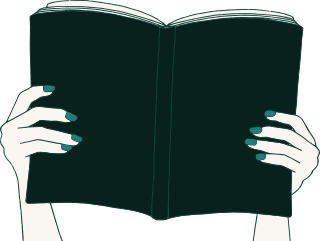The oeuvres of ‘crosswriters’ or ‘dual audience authors’ who write for both children and adults form the perfect touchstones for research on the similarities and differences between children’s literature and literature for adults. By means of stylometry, a digital research method that aids in studying style, the works of ten Dutch and English language dual audience authors were examined. Are there similarities to be found across the oeuvres of these authors? And are there differences within one author’s books that are targeted at different age groups? To research these questions, the target audience and the publication date were factors that were taken into account. By including interviews with the authors, the researchers also considered the writers’ views on style and readers. The main conclusion drawn from the case studies is that the style of the texts usually correlates more strongly with the age of the intended reader than with the time period in which the texts were written. In other words, books for young readers share more similarities than those for adult readers.
Haverals, Wouter, Lindsey Geybels & Vanessa Joosen. ‘A Style for Every Age: A Stylometric Inquiry into Crosswriters for Children, Adolescents and Adults’.
Language and Literature, vol. 31, no. 1, 2022, pp. 1–23.
doi: 10.1177/0963947021107216
Tagged age intended reader, Anne Fine, Bart Moeyaert, David Almond, digital humanities, Guus Kuijer, Hilde Vandermeeren, J.K. Rowling, Joke van Leeuwen, Neil Gaiman, Philip Pullman
Digital techniques haven’t been put to use that often in studies revolving around children’s literature. They do, however, allow for large-scale research possibilities concerning book collections, and they can reveal unexpected patterns. Take for example the analysis of Guus Kuijer’s oeuvre. His novels, and more specifically his novels for children, contain a striking number of explicit reflections and generalisations regarding age. The child characters in Kuijer’s books often judge behaviour that is ‘childish’: they guard ideas on what it means to be a child more than adult characters do. Of course, it’s important to combine ‘distant reading’, techniques by means of which the computer searches for patterns in large corpora, with ‘close reading’, carried out by researchers who pay attention to the specific context of the novel in question. It’s clear that digital text analysis is no longer in its infancy, and that it can make a valuable contribution to the study of children’s literature, which can in turn contribute to the study of age.
Haverals, Wouter & Vanessa Joosen. ‘Constructing Age in Children’s Literature: A Digital Approach to Guus Kuijer’s Oeuvre’.
The Lion and the Unicorn, vol. 45, no. 1, 2021, pp. 25–45.
doi: 10.1353/uni.2021.0002
Age determines the form and content of children’s books in many ways. People havexed ideas about what is suitable for a particular age and what is not, and digital tools can help to map and ask questions about such age norms on a large scale. For this project, the computer ‘read’ 32 Dutch-language children’s books published between 1975 and 2018, and it appears that explicit comments are often made about age in children’s books. Not only do we pay attention to childhood in the project, other life stages are explored as well. It seems that children’s books guard age norms the most, but these comments are often coloured by conflicts, humour, and irony.
Joosen Vanessa. ‘Te kinderachtig voor de kinderen? Leeftijdsnormen in jeugdliteratuur digitaal onderzocht’.
Vooys: tijdschrift voor letteren, vol. 37, no.3, 2019, pp. 1–9.
